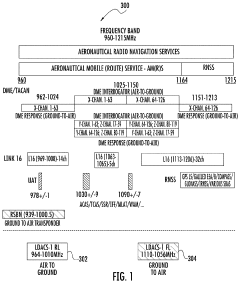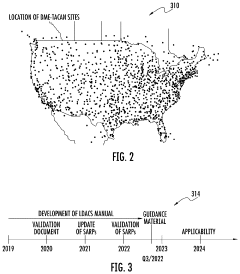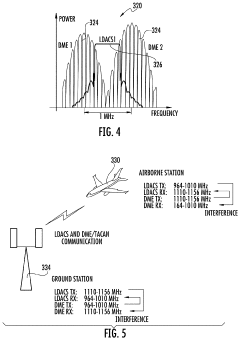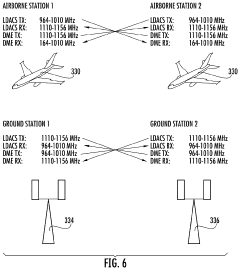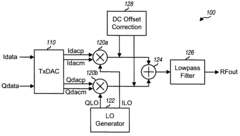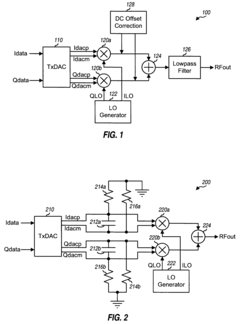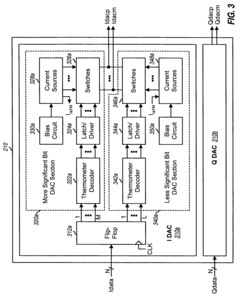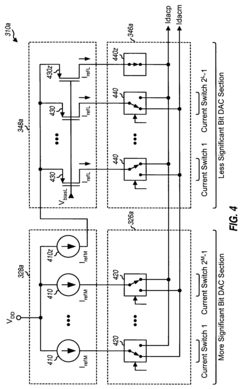New Frontiers with LDAC in Wireless Audio Tech
JUL 4, 20258 MIN READ
Generate Your Research Report Instantly with AI Agent
Patsnap Eureka helps you evaluate technical feasibility & market potential.
LDAC Evolution & Objectives
LDAC, developed by Sony in 2015, represents a significant leap in wireless audio technology. This codec has evolved from its initial introduction to become a cornerstone in high-resolution audio streaming. The primary objective of LDAC has been to overcome the limitations of traditional Bluetooth audio codecs, particularly in terms of audio quality and bandwidth utilization.
The evolution of LDAC can be traced through several key milestones. Initially, it offered a maximum bitrate of 990 kbps, which was a substantial improvement over existing codecs. Subsequent updates focused on enhancing stability and compatibility across various devices. The introduction of adaptive bitrate technology marked a crucial advancement, allowing LDAC to dynamically adjust its performance based on connection quality and device capabilities.
LDAC's objectives have consistently centered on delivering near-lossless audio quality over Bluetooth connections. It aims to support high-resolution audio formats up to 24-bit/96 kHz, significantly surpassing the capabilities of standard Bluetooth codecs. Another key goal has been to minimize latency, crucial for applications like gaming and video streaming where audio-visual synchronization is critical.
In recent years, LDAC has expanded its focus to address power efficiency concerns, recognizing the importance of battery life in portable devices. This has led to the development of more energy-efficient encoding and decoding processes without compromising audio quality. Additionally, LDAC has aimed to improve its integration with various audio ecosystems, ensuring seamless compatibility with a wide range of devices and platforms.
The future objectives for LDAC include further pushing the boundaries of wireless audio fidelity. This involves research into even higher bitrates and support for more advanced audio formats. There's also a growing emphasis on multi-channel audio support, aiming to deliver surround sound experiences wirelessly. As the Internet of Things (IoT) and smart home technologies advance, LDAC is positioning itself to be a key player in these ecosystems, with goals to enhance its performance in multi-device, interconnected audio setups.
Another significant objective is to improve LDAC's resilience in challenging wireless environments. This includes developing more robust error correction mechanisms and adaptive algorithms that can maintain high audio quality even in areas with significant electromagnetic interference or in scenarios with multiple competing wireless signals.
The evolution of LDAC can be traced through several key milestones. Initially, it offered a maximum bitrate of 990 kbps, which was a substantial improvement over existing codecs. Subsequent updates focused on enhancing stability and compatibility across various devices. The introduction of adaptive bitrate technology marked a crucial advancement, allowing LDAC to dynamically adjust its performance based on connection quality and device capabilities.
LDAC's objectives have consistently centered on delivering near-lossless audio quality over Bluetooth connections. It aims to support high-resolution audio formats up to 24-bit/96 kHz, significantly surpassing the capabilities of standard Bluetooth codecs. Another key goal has been to minimize latency, crucial for applications like gaming and video streaming where audio-visual synchronization is critical.
In recent years, LDAC has expanded its focus to address power efficiency concerns, recognizing the importance of battery life in portable devices. This has led to the development of more energy-efficient encoding and decoding processes without compromising audio quality. Additionally, LDAC has aimed to improve its integration with various audio ecosystems, ensuring seamless compatibility with a wide range of devices and platforms.
The future objectives for LDAC include further pushing the boundaries of wireless audio fidelity. This involves research into even higher bitrates and support for more advanced audio formats. There's also a growing emphasis on multi-channel audio support, aiming to deliver surround sound experiences wirelessly. As the Internet of Things (IoT) and smart home technologies advance, LDAC is positioning itself to be a key player in these ecosystems, with goals to enhance its performance in multi-device, interconnected audio setups.
Another significant objective is to improve LDAC's resilience in challenging wireless environments. This includes developing more robust error correction mechanisms and adaptive algorithms that can maintain high audio quality even in areas with significant electromagnetic interference or in scenarios with multiple competing wireless signals.
Wireless Audio Market Trends
The wireless audio market has experienced significant growth and transformation in recent years, driven by technological advancements and changing consumer preferences. This trend is expected to continue, with the global wireless audio market projected to reach substantial value in the coming years. The increasing adoption of smartphones, tablets, and other portable devices has been a key factor in driving demand for wireless audio products.
One of the most notable trends in the wireless audio market is the rapid growth of true wireless stereo (TWS) earbuds. These compact, completely wireless earphones have gained immense popularity due to their convenience and improved audio quality. Major tech companies and audio manufacturers have entered this segment, intensifying competition and driving innovation.
Another significant trend is the integration of advanced audio codecs, such as LDAC, aptX, and AAC, which aim to improve wireless audio quality. These codecs address the limitations of traditional Bluetooth audio transmission by offering higher bitrates and better audio resolution. LDAC, in particular, has garnered attention for its ability to transmit high-resolution audio wirelessly, potentially bridging the gap between wired and wireless audio quality.
The rise of smart speakers and voice-controlled audio devices has also contributed to the growth of the wireless audio market. These devices, often integrated with virtual assistants like Amazon Alexa or Google Assistant, have become increasingly popular in smart home ecosystems. This trend has led to the development of multi-room audio systems and increased focus on voice recognition technology in audio products.
In the automotive sector, wireless audio solutions are gaining traction as car manufacturers seek to enhance in-vehicle entertainment systems. This includes the integration of Bluetooth connectivity, wireless charging for audio devices, and advanced noise-cancellation technologies to improve the in-car audio experience.
The growing demand for active noise cancellation (ANC) technology in wireless headphones and earbuds represents another significant market trend. As consumers seek immersive audio experiences in various environments, manufacturers are investing in developing more sophisticated and efficient ANC solutions.
The wireless audio market is also seeing a shift towards sustainability and eco-friendly designs. Manufacturers are exploring the use of recycled materials, developing products with longer lifespans, and implementing more efficient power management systems to reduce environmental impact.
As the market continues to evolve, we can expect to see further advancements in areas such as battery life, connectivity range, and audio processing technologies. The integration of artificial intelligence and machine learning algorithms to enhance audio quality and personalize user experiences is likely to be a key focus area for future innovations in wireless audio technology.
One of the most notable trends in the wireless audio market is the rapid growth of true wireless stereo (TWS) earbuds. These compact, completely wireless earphones have gained immense popularity due to their convenience and improved audio quality. Major tech companies and audio manufacturers have entered this segment, intensifying competition and driving innovation.
Another significant trend is the integration of advanced audio codecs, such as LDAC, aptX, and AAC, which aim to improve wireless audio quality. These codecs address the limitations of traditional Bluetooth audio transmission by offering higher bitrates and better audio resolution. LDAC, in particular, has garnered attention for its ability to transmit high-resolution audio wirelessly, potentially bridging the gap between wired and wireless audio quality.
The rise of smart speakers and voice-controlled audio devices has also contributed to the growth of the wireless audio market. These devices, often integrated with virtual assistants like Amazon Alexa or Google Assistant, have become increasingly popular in smart home ecosystems. This trend has led to the development of multi-room audio systems and increased focus on voice recognition technology in audio products.
In the automotive sector, wireless audio solutions are gaining traction as car manufacturers seek to enhance in-vehicle entertainment systems. This includes the integration of Bluetooth connectivity, wireless charging for audio devices, and advanced noise-cancellation technologies to improve the in-car audio experience.
The growing demand for active noise cancellation (ANC) technology in wireless headphones and earbuds represents another significant market trend. As consumers seek immersive audio experiences in various environments, manufacturers are investing in developing more sophisticated and efficient ANC solutions.
The wireless audio market is also seeing a shift towards sustainability and eco-friendly designs. Manufacturers are exploring the use of recycled materials, developing products with longer lifespans, and implementing more efficient power management systems to reduce environmental impact.
As the market continues to evolve, we can expect to see further advancements in areas such as battery life, connectivity range, and audio processing technologies. The integration of artificial intelligence and machine learning algorithms to enhance audio quality and personalize user experiences is likely to be a key focus area for future innovations in wireless audio technology.
LDAC Tech Status & Hurdles
LDAC, developed by Sony, represents a significant advancement in wireless audio technology, offering high-resolution audio transmission over Bluetooth. Currently, LDAC is capable of transmitting audio at up to 990 kbps, which is substantially higher than standard Bluetooth codecs. This allows for near-lossless audio quality, making it a preferred choice for audiophiles and high-end audio equipment manufacturers.
Despite its advantages, LDAC faces several challenges in the current wireless audio landscape. One primary hurdle is compatibility. While LDAC is open for adoption by other manufacturers, its integration is not as widespread as more established codecs like SBC or AAC. This limited ecosystem can restrict consumer choice and slow down broader market adoption.
Another significant challenge is power consumption. The high data transmission rate of LDAC requires more power, which can impact battery life in both transmitting and receiving devices. This becomes particularly crucial in portable devices like smartphones and wireless earbuds, where battery life is a key selling point.
Latency is also an area of concern for LDAC. While it performs better than many other high-quality codecs, it still introduces a slight delay that can be noticeable in certain applications, such as gaming or video playback. Reducing this latency without compromising audio quality remains a technical challenge.
From a technical standpoint, LDAC's implementation complexity poses another hurdle. The codec requires more processing power compared to simpler alternatives, which can lead to increased costs and potential heat management issues in smaller devices.
Geographically, LDAC's development and adoption have been centered primarily in Asia, particularly Japan, where Sony is based. While it has gained traction in other regions, its global distribution and support network are not as extensive as some competing technologies.
Looking at the current state of LDAC, there's a clear trend towards improving efficiency and expanding compatibility. Recent updates have focused on optimizing the codec for better performance across a wider range of devices and use cases. However, the technology still faces challenges in achieving universal adoption and overcoming the technical limitations inherent in high-bitrate wireless audio transmission.
As the wireless audio market continues to evolve, LDAC will need to address these hurdles to maintain its position as a leading high-quality audio codec. The future development of LDAC is likely to focus on further reducing power consumption, improving latency, and expanding device compatibility to solidify its place in the competitive landscape of wireless audio technologies.
Despite its advantages, LDAC faces several challenges in the current wireless audio landscape. One primary hurdle is compatibility. While LDAC is open for adoption by other manufacturers, its integration is not as widespread as more established codecs like SBC or AAC. This limited ecosystem can restrict consumer choice and slow down broader market adoption.
Another significant challenge is power consumption. The high data transmission rate of LDAC requires more power, which can impact battery life in both transmitting and receiving devices. This becomes particularly crucial in portable devices like smartphones and wireless earbuds, where battery life is a key selling point.
Latency is also an area of concern for LDAC. While it performs better than many other high-quality codecs, it still introduces a slight delay that can be noticeable in certain applications, such as gaming or video playback. Reducing this latency without compromising audio quality remains a technical challenge.
From a technical standpoint, LDAC's implementation complexity poses another hurdle. The codec requires more processing power compared to simpler alternatives, which can lead to increased costs and potential heat management issues in smaller devices.
Geographically, LDAC's development and adoption have been centered primarily in Asia, particularly Japan, where Sony is based. While it has gained traction in other regions, its global distribution and support network are not as extensive as some competing technologies.
Looking at the current state of LDAC, there's a clear trend towards improving efficiency and expanding compatibility. Recent updates have focused on optimizing the codec for better performance across a wider range of devices and use cases. However, the technology still faces challenges in achieving universal adoption and overcoming the technical limitations inherent in high-bitrate wireless audio transmission.
As the wireless audio market continues to evolve, LDAC will need to address these hurdles to maintain its position as a leading high-quality audio codec. The future development of LDAC is likely to focus on further reducing power consumption, improving latency, and expanding device compatibility to solidify its place in the competitive landscape of wireless audio technologies.
Current LDAC Implementation
01 LDAC codec implementation for high-quality audio transmission
LDAC is a high-resolution audio codec developed for Bluetooth audio transmission. It enables the transmission of high-quality audio data at up to 990 kbps, providing near CD-quality sound over wireless connections. The codec uses adaptive bit rate allocation and efficient encoding techniques to maximize audio quality while maintaining compatibility with various devices.- LDAC codec implementation for high-quality audio transmission: LDAC is a high-resolution audio codec developed for Bluetooth audio transmission. It enables the transmission of high-quality audio data over Bluetooth connections, offering improved sound quality compared to standard codecs. LDAC supports higher bitrates and can maintain audio quality close to that of wired connections.
- Audio quality enhancement through signal processing: Various signal processing techniques are employed to enhance audio quality in LDAC transmissions. These may include noise reduction, dynamic range compression, and frequency response optimization. Advanced algorithms are used to analyze and adjust audio signals in real-time, resulting in clearer and more balanced sound output.
- Adaptive bitrate and sampling rate control: LDAC incorporates adaptive bitrate and sampling rate control mechanisms to maintain optimal audio quality under varying network conditions. The system can dynamically adjust transmission parameters based on available bandwidth and connection stability, ensuring consistent audio performance across different devices and environments.
- Integration with audio hardware and software systems: LDAC technology is integrated into various audio hardware and software systems to maximize its potential. This includes optimizing audio drivers, implementing specialized digital-to-analog converters (DACs), and developing compatible audio processing chips. The integration ensures seamless operation and full utilization of LDAC's capabilities across different devices.
- User experience and interface design for LDAC audio: To enhance user experience with LDAC audio, specialized interface designs and control features are implemented. This includes intuitive audio quality selection options, real-time feedback on audio performance, and customizable sound profiles. These features allow users to easily manage and optimize their LDAC audio experience across various devices and applications.
02 Audio signal processing for improved LDAC performance
Advanced signal processing techniques are employed to enhance LDAC audio quality. These include noise reduction, dynamic range compression, and frequency response optimization. Such processing helps to maintain audio fidelity during encoding and decoding, resulting in clearer and more detailed sound reproduction.Expand Specific Solutions03 Integration of LDAC with audio systems and devices
LDAC technology is integrated into various audio systems and devices, including smartphones, headphones, and speakers. This integration involves optimizing hardware and software components to support the codec's high bitrate and ensuring seamless connectivity between LDAC-enabled devices for optimal audio quality.Expand Specific Solutions04 LDAC quality optimization through adaptive bitrate control
LDAC employs adaptive bitrate control mechanisms to maintain optimal audio quality under varying wireless conditions. This feature allows the codec to dynamically adjust its bitrate based on the available bandwidth and connection stability, ensuring consistent high-quality audio playback even in challenging environments.Expand Specific Solutions05 Compatibility and interoperability of LDAC with other audio technologies
LDAC is designed to be compatible and interoperable with various audio technologies and standards. This includes seamless integration with existing Bluetooth protocols, support for multiple audio formats, and the ability to work alongside other audio enhancement technologies, ensuring a wide range of device support and flexibility in audio system design.Expand Specific Solutions
LDAC Industry Leaders
The wireless audio technology landscape, particularly with LDAC, is in a dynamic growth phase, characterized by increasing market size and evolving technical maturity. Major players like Qualcomm, Intel, and Samsung are driving innovation, while specialized audio companies such as Waves Audio and Oticon are contributing to advancements. The market is seeing a convergence of consumer electronics, telecommunications, and semiconductor industries, with companies like NXP Semiconductors and Skyworks Solutions playing crucial roles. As the technology matures, we're witnessing increased competition and collaboration among established tech giants and emerging startups, leading to rapid improvements in audio quality, energy efficiency, and connectivity features.
QUALCOMM, Inc.
Technical Solution: Qualcomm has been at the forefront of LDAC technology integration in wireless audio. Their Snapdragon Sound technology platform incorporates LDAC to deliver high-resolution audio wirelessly. Qualcomm's implementation supports up to 24-bit/96kHz audio resolution with LDAC, allowing for near lossless audio transmission[1]. They have also developed adaptive bit rate technology that dynamically adjusts the audio quality based on the wireless connection strength, ensuring a stable listening experience[2]. Qualcomm's chips supporting LDAC are widely used in various smartphones and audio devices, making them a key player in advancing LDAC adoption in the wireless audio ecosystem[3].
Strengths: Wide industry adoption, advanced adaptive technologies, and integration with other audio enhancements. Weaknesses: Dependence on device manufacturers for implementation, potential licensing costs for smaller companies.
Samsung Electronics Co., Ltd.
Technical Solution: Samsung has embraced LDAC technology in its Galaxy series smartphones and wearables, pushing the boundaries of wireless audio quality. Their implementation of LDAC allows for high-resolution audio streaming up to 990 kbps, supporting 24-bit/96kHz audio[4]. Samsung has also integrated LDAC with their Scalable Codec technology, which can dynamically adjust the bit rate based on the Bluetooth connection quality, ensuring a stable audio experience[5]. In their Galaxy Buds series, Samsung has combined LDAC with their proprietary audio processing technologies to enhance the overall listening experience, including features like 360 Audio and intelligent Active Noise Cancellation[6].
Strengths: Seamless integration across a wide range of devices, combined with proprietary audio enhancements. Weaknesses: Limited to Samsung ecosystem for full feature set, potential compatibility issues with non-Samsung devices.
LDAC Core Patents & Research
Enhanced ldacs that uses doppler shifts in carrier signals for positioning and navigation
PatentPendingUS20220317290A1
Innovation
- The enhanced LDACS system employs a network architecture that includes multiple LDACS ground stations transmitting carrier signals with offset frequencies, allowing airborne stations to determine position information using Doppler shifts, and uses this information for navigation and communication, while also implementing channel aggregation and dynamic resource allocation to optimize spectrum use and interference management.
High-speed and high-accuracy digital-to-analog converter
PatentInactiveUS7227483B2
Innovation
- A high-speed, high-accuracy TxDAC design with multiple sections using thermometer or binary decoding, incorporating current switches with source degeneration to enhance linearity and reduce noise, allowing for simpler filtering and reduced power consumption.
LDAC Ecosystem Development
The LDAC ecosystem has experienced significant growth and development since its introduction by Sony in 2015. As a high-resolution audio codec, LDAC has become a key player in the wireless audio technology landscape, offering superior sound quality and efficient transmission for Bluetooth devices.
Initially, LDAC was exclusive to Sony products, limiting its adoption across the industry. However, in 2017, Sony made a strategic decision to open-source the codec, allowing other manufacturers to integrate LDAC into their devices. This move greatly expanded the ecosystem, leading to widespread adoption among smartphone manufacturers, audio equipment producers, and chipset makers.
The Android operating system has played a crucial role in LDAC's ecosystem development. Since Android 8.0 (Oreo), LDAC has been natively supported, making it readily available to a vast number of Android devices. This integration has significantly increased the user base and encouraged more audio manufacturers to incorporate LDAC support in their products.
Major smartphone brands such as Samsung, LG, and Huawei have embraced LDAC technology, incorporating it into their flagship devices. This widespread adoption has created a robust ecosystem of LDAC-compatible source devices, driving demand for LDAC-enabled headphones and speakers.
In the audio equipment sector, numerous manufacturers have integrated LDAC into their products. High-end audio brands like Sennheiser, Audio-Technica, and Bowers & Wilkins now offer LDAC-compatible headphones and speakers, catering to audiophiles and music enthusiasts seeking superior wireless audio quality.
The development of LDAC-compatible chipsets has been another crucial factor in ecosystem growth. Companies like Qualcomm and MediaTek have incorporated LDAC support into their Bluetooth audio chipsets, making it easier for device manufacturers to implement the technology across a wide range of products.
As the LDAC ecosystem continues to expand, it faces competition from other high-resolution audio codecs such as aptX HD and LHDC. However, LDAC's wide adoption and continued development by Sony have solidified its position in the market. The codec's ability to transmit audio at up to 990 kbps, significantly higher than standard Bluetooth codecs, remains a key selling point for audio enthusiasts.
Looking ahead, the LDAC ecosystem is poised for further growth as wireless audio technology advances. The increasing demand for high-quality wireless audio experiences in various applications, including gaming, virtual reality, and smart home devices, presents new opportunities for LDAC integration and ecosystem expansion.
Initially, LDAC was exclusive to Sony products, limiting its adoption across the industry. However, in 2017, Sony made a strategic decision to open-source the codec, allowing other manufacturers to integrate LDAC into their devices. This move greatly expanded the ecosystem, leading to widespread adoption among smartphone manufacturers, audio equipment producers, and chipset makers.
The Android operating system has played a crucial role in LDAC's ecosystem development. Since Android 8.0 (Oreo), LDAC has been natively supported, making it readily available to a vast number of Android devices. This integration has significantly increased the user base and encouraged more audio manufacturers to incorporate LDAC support in their products.
Major smartphone brands such as Samsung, LG, and Huawei have embraced LDAC technology, incorporating it into their flagship devices. This widespread adoption has created a robust ecosystem of LDAC-compatible source devices, driving demand for LDAC-enabled headphones and speakers.
In the audio equipment sector, numerous manufacturers have integrated LDAC into their products. High-end audio brands like Sennheiser, Audio-Technica, and Bowers & Wilkins now offer LDAC-compatible headphones and speakers, catering to audiophiles and music enthusiasts seeking superior wireless audio quality.
The development of LDAC-compatible chipsets has been another crucial factor in ecosystem growth. Companies like Qualcomm and MediaTek have incorporated LDAC support into their Bluetooth audio chipsets, making it easier for device manufacturers to implement the technology across a wide range of products.
As the LDAC ecosystem continues to expand, it faces competition from other high-resolution audio codecs such as aptX HD and LHDC. However, LDAC's wide adoption and continued development by Sony have solidified its position in the market. The codec's ability to transmit audio at up to 990 kbps, significantly higher than standard Bluetooth codecs, remains a key selling point for audio enthusiasts.
Looking ahead, the LDAC ecosystem is poised for further growth as wireless audio technology advances. The increasing demand for high-quality wireless audio experiences in various applications, including gaming, virtual reality, and smart home devices, presents new opportunities for LDAC integration and ecosystem expansion.
LDAC Interoperability Issues
LDAC interoperability issues present significant challenges in the wireless audio technology landscape. These issues primarily stem from the proprietary nature of LDAC, developed by Sony, and its limited adoption across different device manufacturers and platforms.
One of the main interoperability concerns is the lack of widespread support for LDAC in non-Sony devices. While LDAC has been made available to other manufacturers through the Android Open Source Project (AOSP), many smartphone and audio device makers have not integrated it into their products. This creates a fragmented ecosystem where consumers cannot fully utilize LDAC's high-quality audio capabilities across all their devices.
Another issue arises from the varying implementations of LDAC across different devices and operating systems. Even when LDAC is supported, inconsistencies in how it is implemented can lead to compatibility problems, reduced performance, or inability to achieve the highest quality audio settings.
The complexity of LDAC's adaptive bitrate system also contributes to interoperability challenges. LDAC can operate at different bitrates (330 kbps, 660 kbps, and 990 kbps), but not all devices may support the full range or switch between them effectively, leading to suboptimal audio experiences in certain scenarios.
Furthermore, the lack of standardization in LDAC's integration with other Bluetooth audio codecs can cause issues when devices need to fall back to alternative codecs. This can result in unexpected audio quality drops or connection problems when LDAC is not available or compatible between devices.
The limited availability of LDAC-enabled content and streaming services also hinders its widespread adoption and interoperability. Many popular music streaming platforms do not yet support LDAC, reducing the incentive for manufacturers to prioritize its integration and potentially leading to inconsistent user experiences across different audio sources.
Addressing these interoperability issues requires collaborative efforts from Sony, device manufacturers, and the broader audio industry. Standardization initiatives, improved documentation, and more open licensing models could help overcome these challenges and promote wider adoption of LDAC technology across the wireless audio ecosystem.
One of the main interoperability concerns is the lack of widespread support for LDAC in non-Sony devices. While LDAC has been made available to other manufacturers through the Android Open Source Project (AOSP), many smartphone and audio device makers have not integrated it into their products. This creates a fragmented ecosystem where consumers cannot fully utilize LDAC's high-quality audio capabilities across all their devices.
Another issue arises from the varying implementations of LDAC across different devices and operating systems. Even when LDAC is supported, inconsistencies in how it is implemented can lead to compatibility problems, reduced performance, or inability to achieve the highest quality audio settings.
The complexity of LDAC's adaptive bitrate system also contributes to interoperability challenges. LDAC can operate at different bitrates (330 kbps, 660 kbps, and 990 kbps), but not all devices may support the full range or switch between them effectively, leading to suboptimal audio experiences in certain scenarios.
Furthermore, the lack of standardization in LDAC's integration with other Bluetooth audio codecs can cause issues when devices need to fall back to alternative codecs. This can result in unexpected audio quality drops or connection problems when LDAC is not available or compatible between devices.
The limited availability of LDAC-enabled content and streaming services also hinders its widespread adoption and interoperability. Many popular music streaming platforms do not yet support LDAC, reducing the incentive for manufacturers to prioritize its integration and potentially leading to inconsistent user experiences across different audio sources.
Addressing these interoperability issues requires collaborative efforts from Sony, device manufacturers, and the broader audio industry. Standardization initiatives, improved documentation, and more open licensing models could help overcome these challenges and promote wider adoption of LDAC technology across the wireless audio ecosystem.
Unlock deeper insights with Patsnap Eureka Quick Research — get a full tech report to explore trends and direct your research. Try now!
Generate Your Research Report Instantly with AI Agent
Supercharge your innovation with Patsnap Eureka AI Agent Platform!
